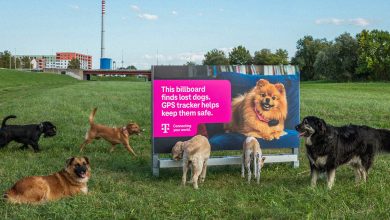MUMBAI, INDIA — Recently expanding its footprint in India, #1 Hair removal cream, wax, depilatory in the US; the NAIR brand has signed on Bollywood actor Mrunal Thakur as its first brand ambassador. Introduced in the 1940s, the brand boasts of a rich legacy with a presence in over 50 countries. The NAIR brand stands for confidence and self-love, qualities that are effortlessly embodied by the self-made Mrunal Thakur.
Named from a hybrid phrase for ‘no-hair,’ the NAIR brand offers a wide range of depilatory and at-home wax solutions. The NAIR brand’s global product portfolio offers products like in-shower creams, body creams, sprays, lotions, cold wax strips, and wax roll-ons. Developed by skincare specialists, beauty experts, and industry veterans, these products are safe to use on the body, to support their need for self-expression.

Conceptualized by Scarecrow M&C Saatchi, the launch campaign encourages women to live life the way they want to. ‘Live on your terms’ is more than just a statement, it’s an attitude. It’s about having the freedom to do things without any rules or shackles. It’s about freedom to be right, wrong and I-don’t-really-care. Because life isn’t just about living, it’s about living freely.
Talking about the association, Mrunal Thakur said, “I am excited about the NAIR brand bringing accessible, safe, and innovative hair removal solutions like never-before to India. I couldn’t be happier to be a part of the NAIR brand, a brand that encourages self-love and self-expression over conforming to external standards. ‘Live on your terms’ is a way of life. It’s about embracing your true self. It’s about being who you are. I look forward to encouraging the new generation and helping them feel confident in their own skin.”
“Mrunal has carved out a niche for herself in a competitive industry. She exudes confidence, authenticity, and positivity – all attributes that resonate with the NAIR brand. Her individualistic personality makes her relatable across age groups, especially the younger audience, making her the perfect choice for the NAIR brand,” said Aditya Pittie – MD, Pittie Group.
With this partnership, both NAIR and Mrunal Thakur hope to create a long-lasting impact, just like NAIR products that are built for long-lasting hair removal. The NAIR brand plans to expand its blade-free, multi-benefit hair removal solution portfolio in India, introducing wax strips, hair removal sprays, and charcoal wax in addition to their hair removal creams. With products that guarantee premium quality at-home convenience and an ambassador armed with oodles of aplomb, the hope is to arm India with confidence-inducing smooth and radiant skin on their own terms anytime, anywhere.
CREDITS
Client: Nair India
Agency: Scarecrow M&C Saatchi








